 Last additions - Nagahama 長浜市 Last additions - Nagahama 長浜市 |

The new Torahime Station on JR Hokuriku Main LineJan 12, 2010
|
|

Torahime Station platform and signJan 12, 2010
|
|

Jan 12, 2010
|
|

Jan 12, 2010
|
|

Jan 12, 2010
|
|

Arrival at JR Torahime Station on the JR Hokuriku Main Line.Jan 12, 2010
|
|

Jan 12, 2010
|
|

Rainfall gaugeJan 12, 2010
|
|

Mizuhiki Shrine. "Mizuhiki" means "to draw water."Jan 12, 2010
|
|

Jan 12, 2010
|
|

Mizuhiki Shrine near the Takawa River Culvert. 水引神社Jan 12, 2010
|
|

Jan 12, 2010
|
|

The Takawa River flows on to Lake Biwa.Jan 12, 2010
|
|

Kojigawa River. The Takawa Culvert is directly below this river.Jan 12, 2010
|
|

Jan 12, 2010
|
|

Other side of Takawa Culvert.Jan 12, 2010
|
|

Map of the culvert project. The culvert was built to prevent flooding from three rivers flowing through the town.Jan 12, 2010
|
|

Bridge over Kojigawa River.Jan 12, 2010
|
|

Entrance to Takawa River Culvert originally built in 1885 to direct the Takawa River to flow under another river called Kojigawa. The current culvert was rebuilt in 1966. MAPJan 12, 2010
|
|

Takawa River Culvert monumentJan 12, 2010
|
|

Autumn flowers at Lake Yogo.Oct 16, 2009
|
|
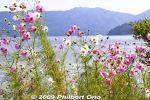
In autumn (late Sept.), cosmos autumn flowers along Lake Yogo.Oct 16, 2009
|
|

Autumn flowers at Lake Yogo, a small scenic lake next to northern Lake Biwa.Oct 16, 2009
|
|
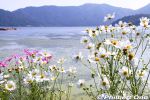
Autumn wildflowers at Lake Yogo.Oct 16, 2009
|
|
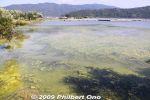
Lake Yogo green with algae in late Sept.Oct 16, 2009
|
|
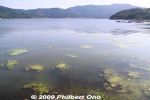
Oct 16, 2009
|
|
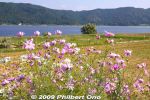
Autumn flowers at Lake Yogo.Oct 16, 2009
|
|
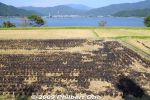
Rice paddies in late Sept.Oct 16, 2009
|
|

Heron with a frog at Lake Yogo, Nagahama, Shiga.Oct 16, 2009
|
|
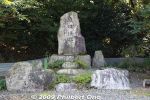
Along the lakeshore road are few monuments like this one for the souls of lake fish.Oct 16, 2009
|
|

Memorial for Yogo's war dead.Oct 16, 2009
|
|
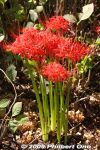
Higan-bana or red spider lily in Sept.Oct 16, 2009
|
|
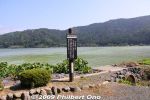
Sign indicating the site of the Battle of Shizugatake.Oct 16, 2009
|
|
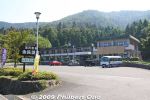
Yogoko-so Kokuminshuku lodge at the southern tip of the lake when it was still operating. It afforded a scenic view of the lake. This was a national pension, so prices were affordable. 国民宿舎 余呉湖荘*Sadly, after 40 years in business since 1971, this pension closed in Sept. 2013 due to aging facilities that were too expensive to repair.Oct 16, 2009
|
|
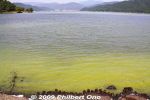
Lake Yogo green with algae in late Sept.Oct 16, 2009
|
|
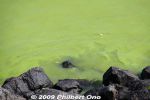
Lake Yogo green with algae in late Sept.Oct 16, 2009
|
|

Lake Yogo is 2.3 km long and 1.2 km wide with a 6.45 km circumference. Maximum depth is 13.3 meters and water surface area is 1.97 sq. km.Oct 16, 2009
|
|
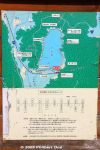
Lake Yogo has a nice lakeshore road going completely around the lake. Going counterclockwise is recommended since you'll be closer to the lake edge on the road. In winter, only part of the road is cleared of snow. The photos below follow a counterclockwise route.Oct 16, 2009
|
|
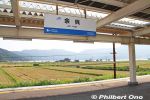
JR Yogo Station platform with Lake Yogo in the background. In Sept. after the rice was harvested.Oct 16, 2009
|
|

Lake Yogo's swan maiden story.Oct 16, 2009
|
|

Lake Yogo as seen from Yogo Station. The tree where the swan maiden hung her clothing to bathe in the lake is on the right.Oct 16, 2009
|
|
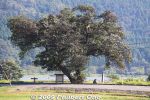
Swan maiden tree at Lake Yogo. It's actually not that close to the lake edge. It's a willow tree. (マルバヤナギ) 余呉湖の衣掛柳Oct 16, 2009
|
|
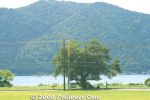
Swan maiden's tree. A sign next to it explains the legend. Lake Yogo is Japan's most noted lake for the swan maiden story. 余呉湖の衣掛柳Oct 16, 2009
|
|
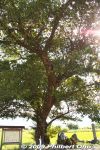
Swan maiden's tree. Sadly, a strong typhoon knocked down this tree and it's no longer here.Oct 16, 2009
|
|
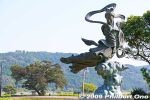
Lake Yogo swan maiden monument before it was moved to its present location. The swan maiden tree can be seen in the background.Oct 16, 2009
|
|
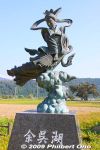
Lake Yogo is also noted for the swan maiden legend. There's even a statue monument for her. The pedestal is engraved with "Yogo-ko" (Lake Yogo).Oct 16, 2009
|
|
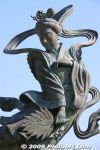
Swan maiden statue at Lake Yogo. Monument built in Nov. 1994.Oct 16, 2009
|
|

Lake Yogo as seen from the long hiking trail from Mt. Shizugatake. MAPOct 16, 2009
|
|
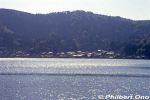
Oct 16, 2009
|
|
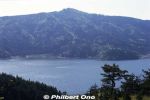
View of Lake Yogo from the hiking trail from Mt. Shizugatake.Oct 16, 2009
|
|
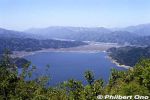
Lake Yogo as seen from Mt. Shizugatake in May.Oct 16, 2009
|
|

At the end of this trail is this shore of Lake Yogo, on the opposite end from Yogo Station. You still have to walk along one side of the lake to get to the train station. It's a scenic walk.Oct 16, 2009
|
|

The defunct Yogoko-so Kokuminshuku lodge at the southern tip of the lake. It had a scenic view of the lake. This was a national pension with affordable prices. 国民宿舎 余呉湖荘Sadly, after 40 years in business, this pension closed in Sept. 2013 due to aging facilities that were too expensive to repair. It has been torn down.Oct 16, 2009
|
|

Oct 16, 2009
|
|

Another trail from the summit of Shizugatake is next to this lookout deck. Oct 16, 2009
|
|
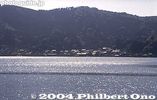
Lake YogoOct 16, 2009
|
|

This trail is the shortest route to Lake Yogo. It goes down to the Yogo-so minshuku.Oct 16, 2009
|
|

Dense forest, somewhat rocky at times. Go right here.Oct 16, 2009
|
|

Lake Yogo gets closer toward the end of the trail.Oct 16, 2009
|
|

Oct 16, 2009
|
|
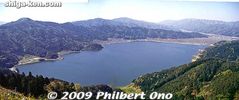
Lake Yogo as seen from the hiking trail on Mt. Shizugatake in Nagahama, Shiga Prefecture.Oct 16, 2009
|
|

View of Nagahama.Oct 16, 2009
|
|

Hiking trail to Lake Yogo.Oct 16, 2009
|
|

The trail is heavily wooded, and sometimes there is a clear area where you can see the scenery.Oct 16, 2009
|
|
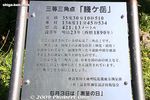
Oct 16, 2009
|
|

At one end of the summit area is a hiking trail leading to the far end of Lake Yogo, toward Yogo Station. The trail is 3.9 km.Oct 16, 2009
|
|

Oct 16, 2009
|
|

Oct 16, 2009
|
|

Oct 16, 2009
|
|

Lake Yogo as seen from Mt. Shizugatake. This is in Sept. Looks greenish due to algae perhaps. Been like that since Aug. It turns blue again in fall.Oct 16, 2009
|
|

Oct 16, 2009
|
|
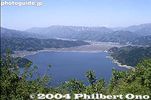
Lake Yogo as seen from Mt. Shizugatake in Nagahama, Shiga. This is in May.Oct 16, 2009
|
|

Lookout deck for Lake Yogo.Oct 16, 2009
|
|

About the Battle of Shizugatake.Oct 16, 2009
|
|
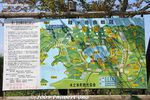
Map of Shizugatake and Yogo area.Oct 16, 2009
|
|

Oct 16, 2009
|
|

Samurai statue on Mt. ShizugatakeOct 16, 2009
|
|

Oct 16, 2009
|
|

Summit of Shizugatake. A small flat clearing.Oct 16, 2009
|
|

Oct 16, 2009
|
|

Oct 16, 2009
|
|

Oct 16, 2009
|
|

Another worn out monument on Shizugatake.Oct 16, 2009
|
|

Older votive tablets which were removed from the wall are preserved as photos in this photo album.Oct 16, 2009
|
|

Yogo mountainsOct 16, 2009
|
|

Shimmering waters of Lake Biwa.Oct 16, 2009
|
|

Oct 16, 2009
|
|

In the lookout deck is this board to hang votive tablets on which people write their wishes.Oct 16, 2009
|
|

Oct 16, 2009
|
|

Oct 16, 2009
|
|
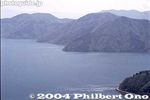
Oct 16, 2009
|
|

Oct 16, 2009
|
|

That's Chikubushima island on the left.Oct 16, 2009
|
|
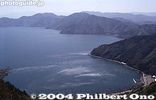
Oct 16, 2009
|
|

Northern Lake Biwa, looking toward Sugaura. Seen from Mt. Shizugatake.Oct 16, 2009
|
|

Great views of northern Lake Biwa as seen from Mt. Shizugatake.Oct 16, 2009
|
|

On the other side of Shizugatake is this lookout deck.Oct 16, 2009
|
|

Marker for the Battle of Shizugatake and the famous "Seven Spears" which refer to Hideyoshi's top generals in the battle.Oct 16, 2009
|
|

View looking south.Oct 16, 2009
|
|

Lookout deck for the south.Oct 16, 2009
|
|

Oct 16, 2009
|
|
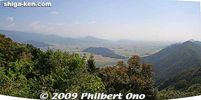
On this side of Shizugatake is a great view looking south.Oct 16, 2009
|
|

Oct 16, 2009
|
|

Near the summit are the white banners we saw from the foot of the mountain. They are written with the names of Hideyoshi's so-called "Seven Spears," in reference to his top seven samurai generals who went to battle at Shizugatake.Oct 16, 2009
|
|

The seven generals were Fukushima Masanori (1561-1624), Hirano Nagayasu (1559-1628), Kasuya Takenori (1562-1607), Katagiri Katsumoto (1556-1615), Katō Kiyomasa (1562-1611), Katō Yoshiaki (1563-1631), and Wakizaka Yasuharu (1554-1626).Oct 16, 2009
|
|

Oct 16, 2009
|
|

A small shrine along the way.Oct 16, 2009
|
|

A small shrine dedicated to the warriors who died at battle on the mountain.Oct 16, 2009
|
|

After you get off the chair lift, walk up the slope for 300 meters to the summit.Oct 16, 2009
|
|

At the top of the chair lift. Mt. Shizugatake chair lift (500 meters long) started operating in Aug. 1959. It takes 6 minutes to go up to the top.Oct 16, 2009
|
|

Chair lift going to Mt. Shizugatake. This lift operates April-Nov., 9 am - 5 pm. Closed during winter.Oct 16, 2009
|
|

From the parking lot, there is a short path to the chair lift.Oct 16, 2009
|
|

Mt. Shizugatake chair lift costs ¥450 one way, or ¥900 round trip (as of Jun 2021). If you plan to hike down to Lake Yogo (recommended), buy a one-way ticket.Oct 16, 2009
|
|

You can see white banners on the top of Shizugatake.Oct 16, 2009
|
|

Sign pointing the way to Shizugatake. MAPOct 16, 2009
|
|

From the train approaching JR Kinomoto Station on the Hokuriku Line, you can see the chair lift trail on the slope of Mt. Shizugatake. To reach Shizugatake from Kinomoto Station, take a bus bound for Sugaura (菅浦) or Shindono (新道野).Oct 16, 2009
|
|

Get off at the Ooto (大音) bus stop as seen here, and cross the road and walk toward the mountain. Oct 16, 2009
|
|

Jul 13, 2009
|
|

Lake Biwa shore near the castle tower.Jul 13, 2009
|
|

View of cherry blossoms from Nagahama Castle's lookout deck.Jul 13, 2009
|
|

Jul 13, 2009
|
|

Nagahama Castle tower, local history museum.Jul 13, 2009
|
|

Side view of Nagahama CastleJul 13, 2009
|
|

Jul 13, 2009
|
|

Jul 13, 2009
|
|

Jul 13, 2009
|
|

Jul 13, 2009
|
|

Jul 13, 2009
|
|

Panorama from the top of Nagahama Castle, looking south.Jul 13, 2009
|
|

Nagahama Castle as seen from Lake Biwa.Jul 13, 2009
|
|

Jul 13, 2009
|
|

Panorama from the top of Nagahama Castle, looking north and west.Jul 13, 2009
|
|

The old and new sites of the castle tower.Jul 13, 2009
|
|

Jul 13, 2009
|
|

Water fountain and Nagahama Castle in spring.Jul 13, 2009
|
|

Jul 13, 2009
|
|

Jul 13, 2009
|
|

In spring.Jul 13, 2009
|
|

Statue of Toyotomi Hideyoshi, Nagahama Castle, Shiga. He renamed the town from Imahama to "Nagahama" after his boss and mentor Oda Nobunaga.Jul 13, 2009
|
|

Jul 13, 2009
|
|

Jul 13, 2009
|
|

Jul 13, 2009
|
|

Jul 13, 2009
|
|

Jul 13, 2009
|
|

Mt. Yamamoto-yama as seen from Nagahama Castle.Jul 13, 2009
|
|

Jul 13, 2009
|
|

Lake Biwa and cherry blossoms as seen from Nagahama Castle.Jul 13, 2009
|
|

Jul 13, 2009
|
|

Model of castle construction.Jul 13, 2009
|
|

On the original site of the castle tower is a stone marker and statue of Toyotomi Hideyoshi.Jul 13, 2009
|
|

Cherry blossoms in full bloom and no people. How wonderful. Like it was all for me only, at 7 am.Jul 13, 2009
|
|

Jul 13, 2009
|
|

Plaque proclaiming Hokoen Park as one of Japan's 100 Best Cherry Blossom Places.Jul 13, 2009
|
|

Jul 13, 2009
|
|

I visited the park in April 2009 in the early morning before the crowds arrived. It truly was a peaceful beauty.Jul 13, 2009
|
|

Jul 13, 2009
|
|

In winter.Jul 13, 2009
|
|

Back on the ground heading toward another bunch of cherry trees.Jul 13, 2009
|
|

Stone foundation of original Nagahama castle tower. It is just slightly behind the current castle building is this small hill with stone walls.Jul 13, 2009
|
|

Inside Nagahama Castle, a local history museum.Jul 13, 2009
|
|

Nagahama Castle, ShigaJul 13, 2009
|
|

Stone monument marking the site of the original Nagahama castle donjon.Jul 13, 2009
|
|

Stone marker and statue of Toyotomi Hideyoshi.Jul 13, 2009
|
|

Jul 13, 2009
|
|
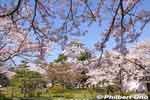
Nagahama CastleJul 13, 2009
|
|
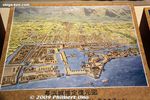
Old map of Nagahama Castle. There were many moats and canals.Jul 13, 2009
|
|

Jul 13, 2009
|
|

Plaque proclaiming Hokoen Park as one of Japan's 100 Best Cherry Blossom Spots.Jul 13, 2009
|
|

Jul 13, 2009
|
|

On the balcony, with Mt. Ibuki in the distance in winter.Jul 13, 2009
|
|

Jul 13, 2009
|
|

Jul 13, 2009
|
|

Top floor of castle.Jul 13, 2009
|
|

Jul 13, 2009
|
|
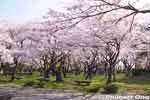
Jul 13, 2009
|
|

Jul 13, 2009
|
|

Jul 13, 2009
|
|

Cherry Blossom Plaque and Nagahama Castle Honmaru marker.Jul 13, 2009
|
|

Panorama from the top of Nagahama Castle, looking west toward Lake Biwa.Jul 13, 2009
|
|

Jul 13, 2009
|
|

Nagahama Castle and cherry blossoms.Jul 13, 2009
|
|

The current castle tower was reconstructed in 1983. It serves as a local history museum.Jul 13, 2009
|
|

In April, numerous cherry trees around the castle in Hokoen Park bloom spectacularly. The best time to visit Nagahama Castle.Jul 13, 2009
|
|

The original castle was built by Toyotomi Hideyoshi in the 16th century who lived in Nagahama Castle until 1582. Lord Yamauchi Kazutoyo later lived in Nagahama Castle.Jul 13, 2009
|
|

Nagahama Castle (reconstructed) is a lakeside castle within Hokoen Park near Nagahama Station. This is the entrance to the park. 豊公園 MAPJul 13, 2009
|
|

Jul 11, 2009
|
|

Jul 11, 2009
|
|

Jul 11, 2009
|
|

Nagahama Hikiyama poster for an earlier year. The official festival poster changes every year and is always well designed.Jul 11, 2009
|
|

Jul 11, 2009
|
|

Jul 11, 2009
|
|

Jul 11, 2009
|
|

Jul 11, 2009
|
|

Jul 11, 2009
|
|

Jul 11, 2009
|
|

Jul 11, 2009
|
|

Footwear behind a float.Jul 11, 2009
|
|
|
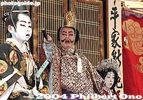
Jul 11, 2009
|
|
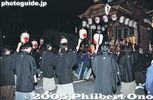
The festival on April 15 lasts well after dark. The day's final kabuki performance starts at around 8 pm at the Otabisho.Jul 11, 2009
|
|
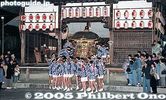
At around 9 pm when the day's final kabuki performance ends, they take out the mikoshi and parade it around the Otabisho before they carry it back to Nagahama Hachimangu Shrine.Jul 11, 2009
|
|

A hikiyama proceeds through the shopping arcade whose ceiling is high enough. Each hikiyama holds a kabuki performance four times this day.Jul 11, 2009
|
|

Jul 11, 2009
|
|

They use microphones so we can hear them speak. Very authentic style, and they practiced a lot for this festival.Jul 11, 2009
|
|

Jul 11, 2009
|
|

Jul 11, 2009
|
|

Jul 11, 2009
|
|

Turning the hikiyama's wheel.Jul 11, 2009
|
|

The last kabuki performance was a dance rather than a play.Jul 11, 2009
|
|

Jul 11, 2009
|
|

Jul 11, 2009
|
|

Jul 11, 2009
|
|

Jul 11, 2009
|
|

At the shrine, the kabuki play is performed one by one on the four floats, and not at the same time.Jul 11, 2009
|
|

Jul 11, 2009
|
|

Jul 11, 2009
|
|

Jul 11, 2009
|
|

Jul 11, 2009
|
|

Jul 11, 2009
|
|

Jul 11, 2009
|
|

Jul 11, 2009
|
|

Boys act on a boat on the boat float.Jul 11, 2009
|
|

Jul 11, 2009
|
|

Jul 11, 2009
|
|

Jul 11, 2009
|
|

The hikiyama floats await at the shrine as everyone arrive. The hikiyama are about 7 meters high.Jul 11, 2009
|
|

The kabuki performances then started at around 10 am on one of the hikiyama floats. The kabuki performances are held as offerings to Nagahama Hachimangu Shrine.Jul 11, 2009
|
|

Jul 11, 2009
|
|

Jul 11, 2009
|
|

Jul 11, 2009
|
|

Jul 11, 2009
|
|

Jul 11, 2009
|
|

Jul 11, 2009
|
|

Jul 11, 2009
|
|
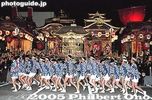
They run around with the mikoshi, making a big ruckus.Jul 11, 2009
|
|

Jul 11, 2009
|
|

As the float is pulled, flute players follow it.Jul 11, 2009
|
|

Jul 11, 2009
|
|

Jul 11, 2009
|
|

Jul 11, 2009
|
|

Jul 11, 2009
|
|

Jul 11, 2009
|
|

Jul 11, 2009
|
|

Jul 11, 2009
|
|

After the kabuki play ends, they pull and turn the hikiyama float and it goes toward central Nagahama through the shopping arcade where they will perform the same play again.Jul 11, 2009
|
|

Jul 11, 2009
|
|

Jul 11, 2009
|
|

A short distance from the shopping arcade is the Otabisho where all hikiyama floats congregate and give the day's final performance.Jul 11, 2009
|
|

Jul 11, 2009
|
|

Jul 11, 2009
|
|

Jul 11, 2009
|
|

Jul 11, 2009
|
|
| 3007 files on 12 page(s) |
 |
 |
7 |  |
 |
|